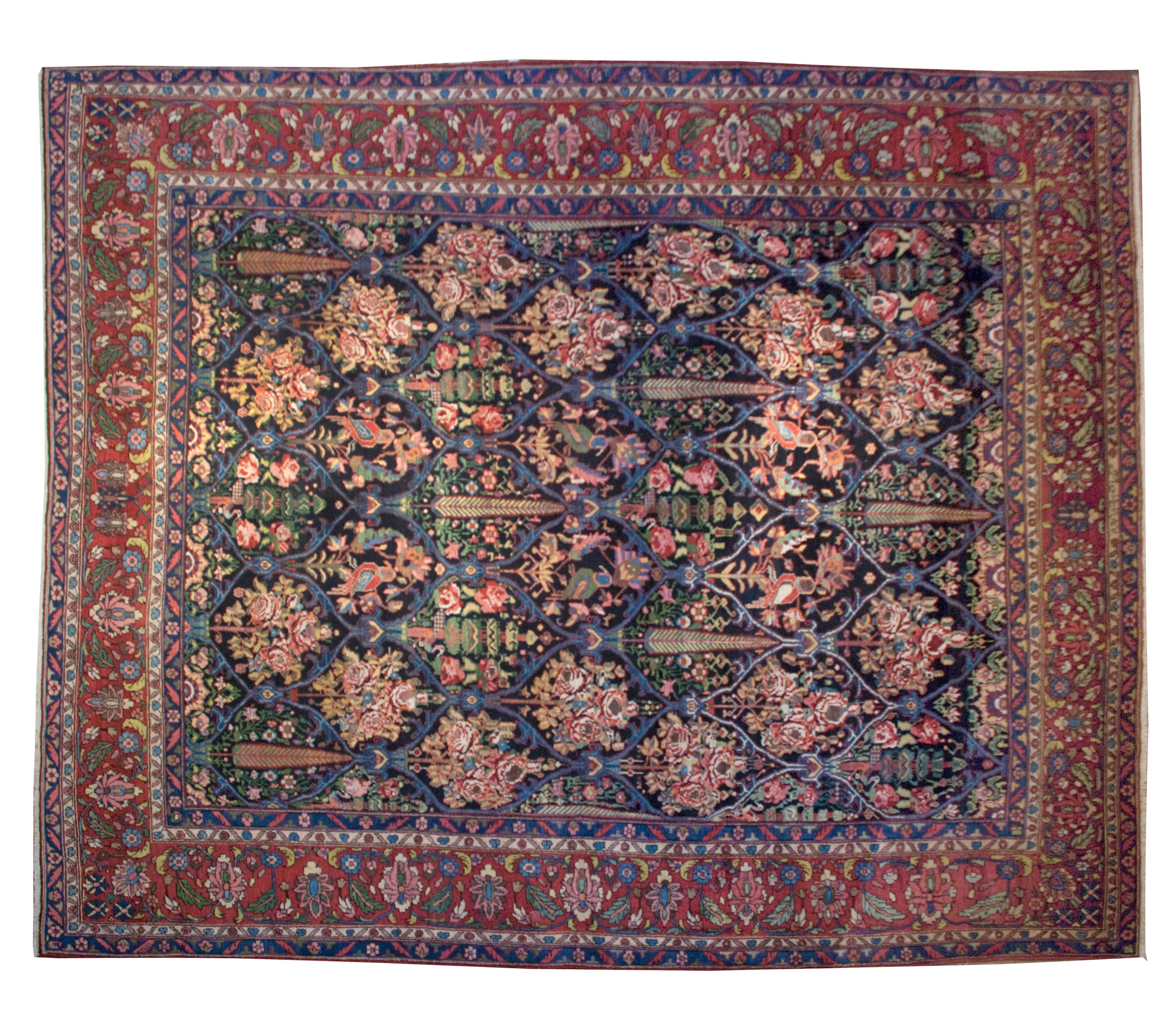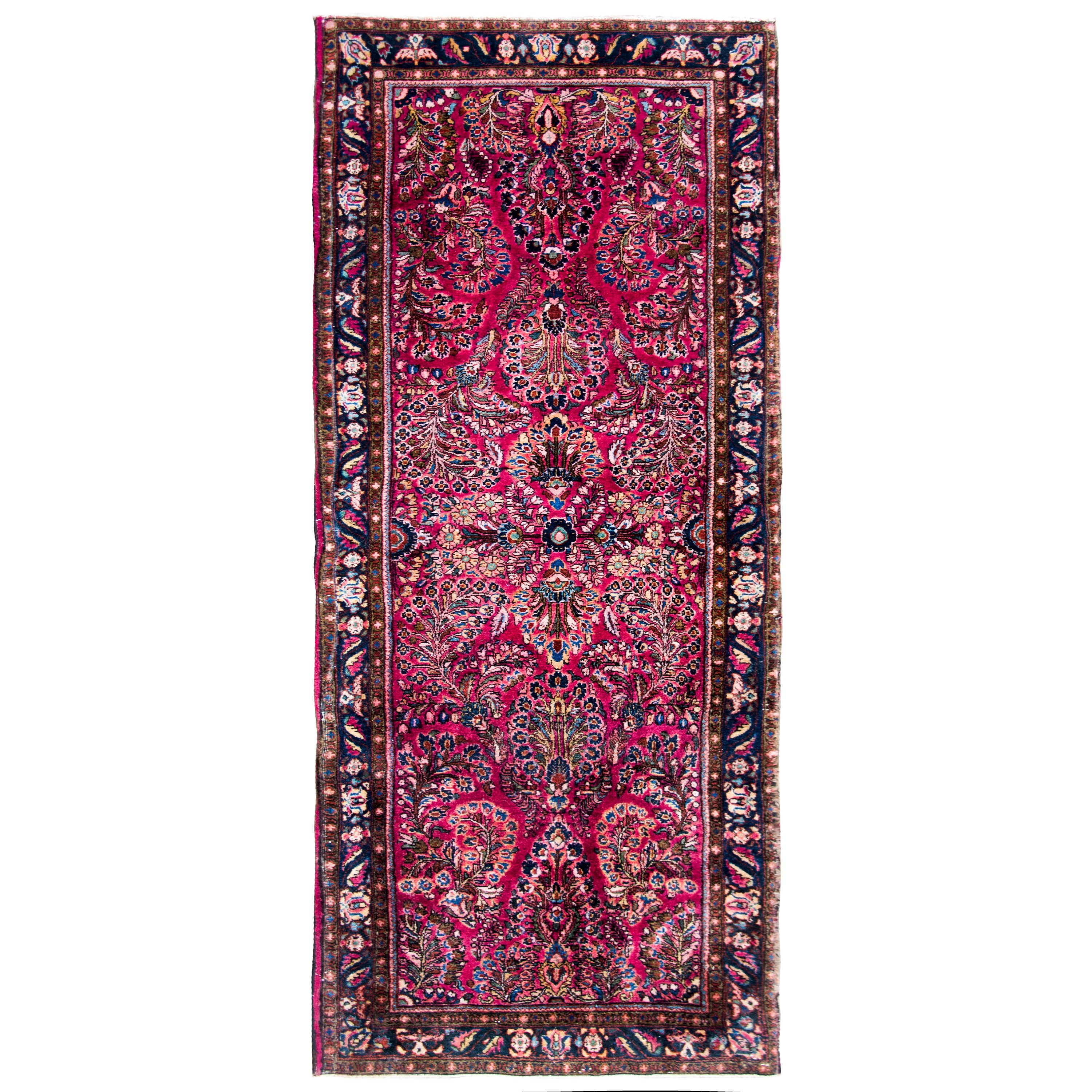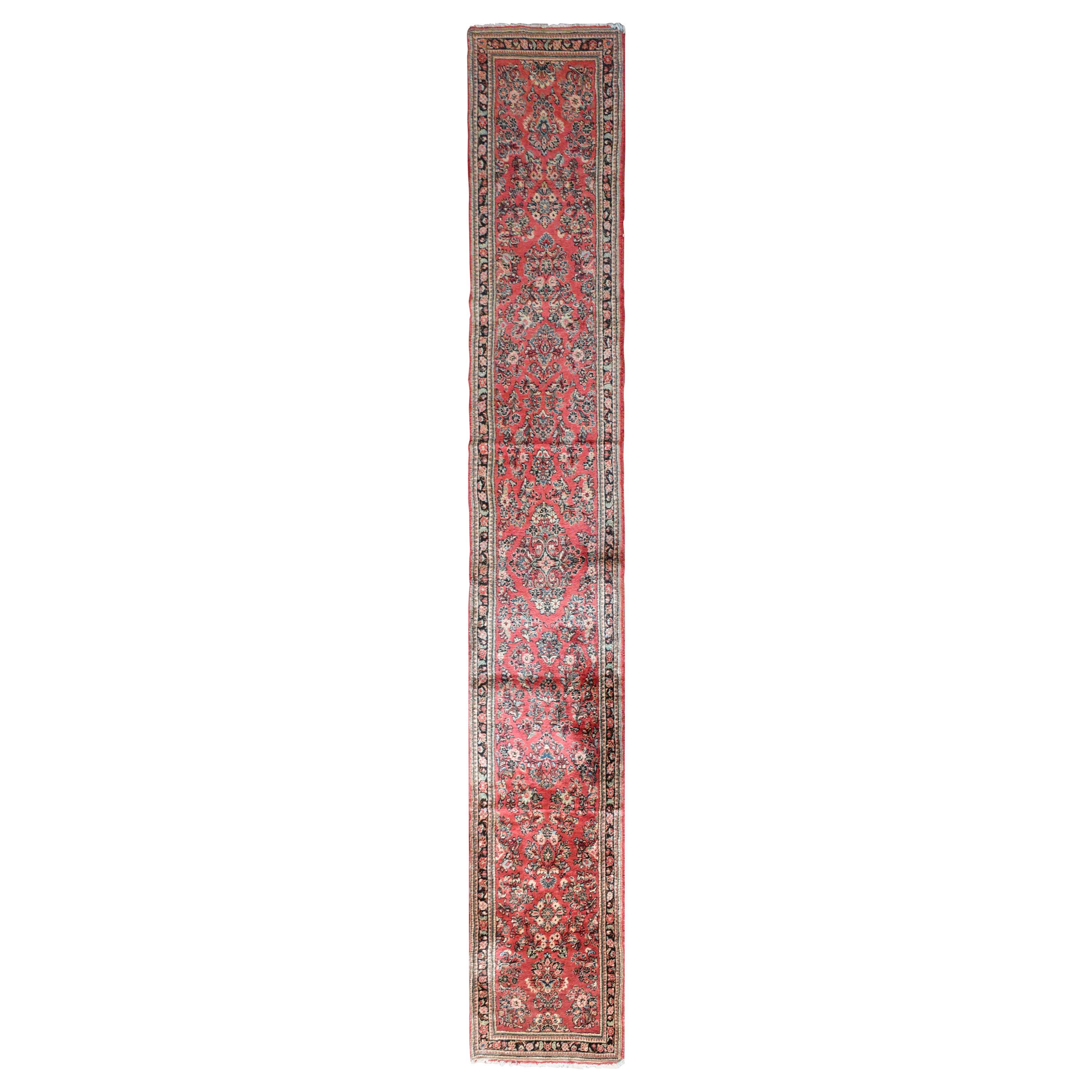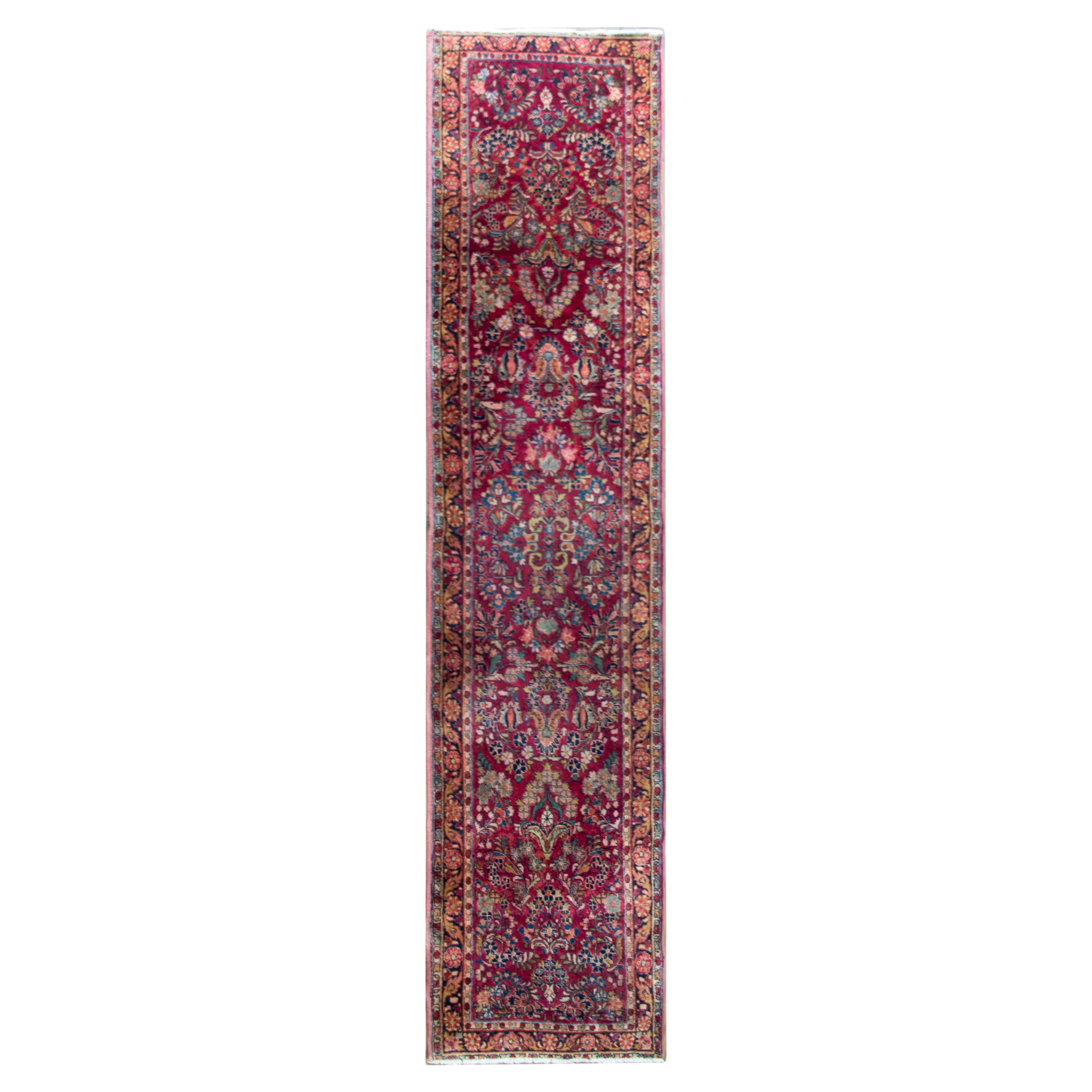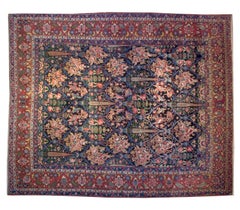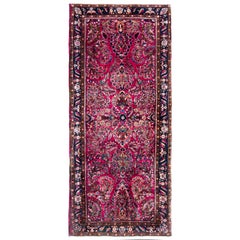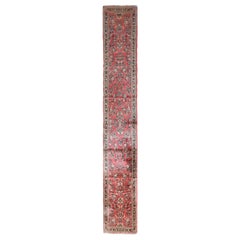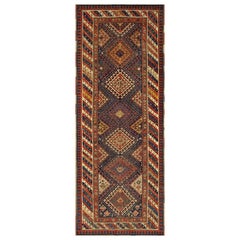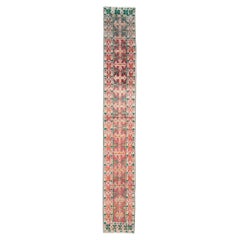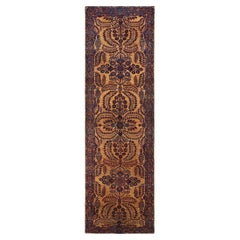Items Similar to Early 20th Century Persian Sarouk Carpet Runner
Want more images or videos?
Request additional images or videos from the seller
1 of 6
Early 20th Century Persian Sarouk Carpet Runner
About the Item
An early 20th century Persian Sarouk carpet runner with wonderfully intricate pattern on a crimson background surrounded by a floral and paisley border. Measures: 5.8" x 17'.
- Dimensions:Width: 68 in (172.72 cm)Length: 204 in (518.16 cm)
- Materials and Techniques:Wool,Vegetable Dyed
- Place of Origin:
- Period:
- Date of Manufacture:circa 1920
- Condition:Wear consistent with age and use.
- Seller Location:Chicago, IL
- Reference Number:Seller: R20521stDibs: LU9280757327
About the Seller
4.9
Platinum Seller
Premium sellers with a 4.7+ rating and 24-hour response times
Established in 1992
1stDibs seller since 2012
550 sales on 1stDibs
Typical response time: <1 hour
- ShippingRetrieving quote...Shipping from: Chicago, IL
- Return Policy
Authenticity Guarantee
In the unlikely event there’s an issue with an item’s authenticity, contact us within 1 year for a full refund. DetailsMoney-Back Guarantee
If your item is not as described, is damaged in transit, or does not arrive, contact us within 7 days for a full refund. Details24-Hour Cancellation
You have a 24-hour grace period in which to reconsider your purchase, with no questions asked.Vetted Professional Sellers
Our world-class sellers must adhere to strict standards for service and quality, maintaining the integrity of our listings.Price-Match Guarantee
If you find that a seller listed the same item for a lower price elsewhere, we’ll match it.Trusted Global Delivery
Our best-in-class carrier network provides specialized shipping options worldwide, including custom delivery.More From This Seller
View AllEarly 20th Century Persian Bakhtiari Carpet,
Located in Chicago, IL
An early 20th century Persian Bakhtiari carpet with all-over ornately woven tree of life and bird of paradise pattern, surrounded by a floral border. 10'7" x 12'10"
Reza's Rug Gal...
Category
Persian Persian Rugs
Materials
Wool
Early 20th Century Persian Sarouk Runner
Located in Chicago, IL
A beautiful early 20th century Persian Sarouk runner with a large-scale mirrored floral pattern containing myriad floral clusters all woven in light and dark indigo, pink, white, and...
Category
Vintage 1930s Persian Sarouk Farahan Persian Rugs
Materials
Wool
$1,960 Sale Price
20% Off
Early 20th Century Persian Sarouk Runner
Located in Chicago, IL
A wonderful early 20th century Persian Sarouk runner with a traditional all-over mirrored floral pattern woven in pink, indigo, and cream, set against a dark cranberry background and...
Category
Vintage 1930s Persian Sarouk Farahan Persian Rugs
Materials
Wool
$3,840 Sale Price
20% Off
Early 20th Century Persian Sarouk Runner
Located in Chicago, IL
An early 20th century Persian Sarouk runner with all-over floral pattern on a rust colored background, surrounded by a complementary floral border.
Category
Vintage 1930s Persian Rugs
Materials
Wool
$6,080 Sale Price
20% Off
Early 20th Century Persian Sarouk Runner
Located in Chicago, IL
A wonderful early 20th century Persian Sarouk runner with an all-over mirrored floral pattern woven in traditional Sarouk colors of cranberry, pink, light and dark indigo, and cream,...
Category
Vintage 1920s Persian Sarouk Farahan Persian Rugs
Materials
Wool
$2,560 Sale Price
39% Off
Early 20th Century Persian Sarouk Runner
Located in Chicago, IL
This early 20th-century Persian Sarouk runner is a captivating example of traditional craftsmanship and timeless design. Featuring a classic Sarouk pattern, its field is adorned with...
Category
Vintage 1930s Persian Sarouk Farahan Persian Rugs
Materials
Wool
You May Also Like
Early 20th Century Persian Sarouk Lilian Long Runner
Located in Barrington, IL
Early 1900s Persian Sarouk Lilian Runner in an Allover Floral Design in abrash red color background. The floral pattern in this sarouk Lilian long runner has beautiful shades of g...
Category
Early 20th Century Persian Persian Rugs
Materials
Wool, Cotton
Early 20th Century N.W. Persian Runner Carpet
Located in New York, NY
Early 20th Century N.W. Persian Runner Carpet
Category
Antique Early 1900s Persian Persian Rugs
Materials
Wool
$5,440 Sale Price
20% Off
Tribal Mid-20th Century Handmade Persian Turkoman Runner
Located in New York, NY
A vintage Persian tribal Turkoman rug in runner format handmade during the mid-20th century. Although this rug is of Persian origin, the roots of Turkoman rugs originated in the Central Asian region.
Measures: 1' 6" x 10' 4"
Central Asian Rugs & Carpets:
Central Asia is a vast area stretching from Northeastern Persia to western China, and from northern Afghanistan to the southern edge of Russia. The carpets can be usefully divided into three groups: the nomadic Turkmen rugs of Turkmenistan, northern Afghanistan, and northeastern Persia; the non-Turkmen tribal pieces from Kazakhstan, Uzbekistan, and Kirghizstan; and the urban creations of Khotan, Yarkand, and Kashgar, oasis cities of Western China (Xinjiang Province).
Commercially, the most important group is from Khotan, the easternmost of the Chinese Turkestan cities. The craft of rug weaving is primarily in the hands of Muslim Uighurs. Khotan carpets mix purely Central Asian design themes with Chinese elements. Native Khotan devices include pomegranate trees, upright flowers, round medallions, and yellow or red grounds. Chinese motives include triangular fretwork corners, swastika fretwork, and Yun-Tsao Tou (clouds and rain) diagonally striped polychrome borders. Cotton foundations, asymmetrical (Persian) knots, and medium weaves are standard. Some vintage Khotan are in horizontal, pictorial layouts with multiple various vases and plants. Saphs (multiple prayer niche panel carpets) are also a Khotan specialty. Others employ stepped and layered lozenge medallions, singly or in pairs. Still others, almost all antique, feature a stylized version of the allover Persian Herati design. Many of the oldest pieces employ brown wool wefts. Antique and vintage Khotans are almost always in the k’ang (double square) layout, conforming to the local household plans. Only relatively recently has the 6’ by 12’ or 7’ by 16’ format been replaced by the 9’ by 12’ size. As a result, an antique room size Khotan carpet is very uncommon. Reds are cinnamon, tomato and rust, never wine reds, crimson, or scarlet. Yarkand, farther west on the old Silk Road specializes in multi-medallion long carpets while Kashgar, farthest west and most under Persian influence, has traditionally knotted allover pattern pieces with finer weaves, often with silk piles, and enriched with medal thread, on cotton foundations. Extant Kashgars go back to the 17th century, but the carpet craft in Chinese Turkestan must be much older as fragments have been recovered from local tombs of the early C.E. period. Kashgars are the rarest of all East Turkestan rugs. Most available vintage East Turkestan carpets are interwar Khotans, many with pleasingly soft decorative palettes.
The non-Turkmen nomads include the Kazakh, Kirghiz, Uzbek, and Karakalpak groups. Like the Turkmen, they were once all seasonally migratory, dwelling in round felt tents (yurts), but have been settled, at least partially, in the villages, and have taken up crafts and agriculture instead of sheep herding. As a result, carpet production has transitioned from domestic tent use to commercial sale, but the roots of long traditions are still evident. The Uzbeks weave...
Category
Mid-20th Century Persian Tribal Persian Rugs
Materials
Wool
Mid 20th Century Persian Sarouk Carpet
Located in New York, NY
Mid 20th Century Persian Sarouk Carpet 2'10" x 9'8"
Category
Vintage 1920s Persian Persian Rugs
Materials
Wool
Early 20th Century Handmade Persian Sarouk Room Size Carpet
Located in New York, NY
An antique Persian Sarouk room size carpet handmade during the early 20th century.
Measures: 9' 0" x 11' 9".
Category
Early 20th Century Persian Tabriz Persian Rugs
Materials
Wool
Mahajeran Sarouk Carpet, Early 20th Century
Located in San Francisco, CA
Mahajeran Sarouk Carpet, Early 20th Century
Sarouk carpets from central Persia have been a favorite with American designers for nearly a century. Most Sarouk carpets hail from the 1920’s and 30’s and reflect a nascent Persian appreciation for international Art Deco style. This elegant Mahajeran Sarouk is arguably a generation earlier. With large scale drawing...
Category
Early 20th Century Persian Persian Rugs
Materials
Wool
Recently Viewed
View AllMore Ways To Browse
Louis Xv Office Chairs And Desk Chairs
Louis Xvi Couch Pairs
Lounge Chair Ochre
Lounge Pods
Machine Age Chrome Chair
Magnolia Plate
Mah Jong
Mahogany Folding Chair
Mahogany Klismos Chair
Mahogany Piano Stool
Majolica Apple
Majolica Insect
Marina Side Table
Martini Olive
Mastercraft Brass Bar
Mauro Manetti Ice Bucket
Mcm Pedestal
Mcm Wood Coffee Table
